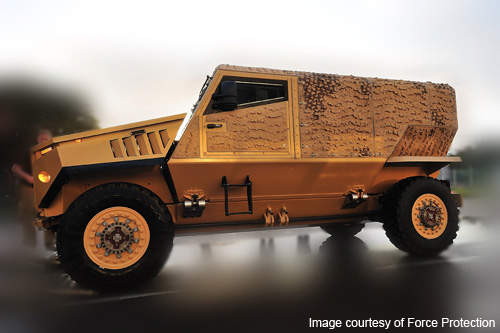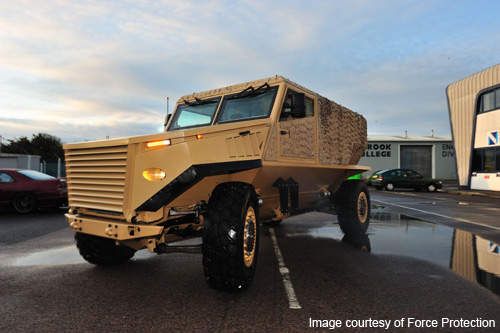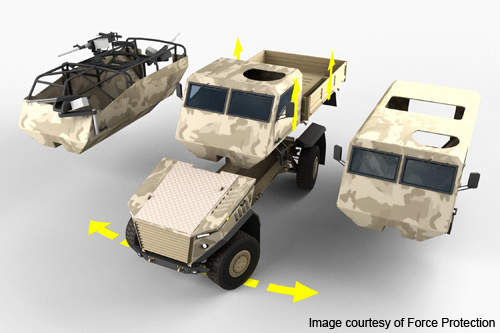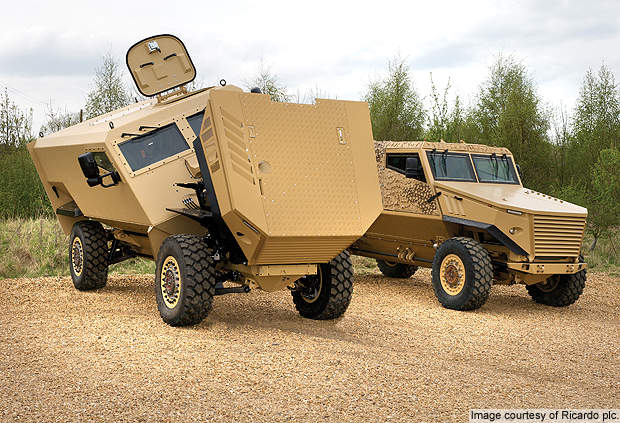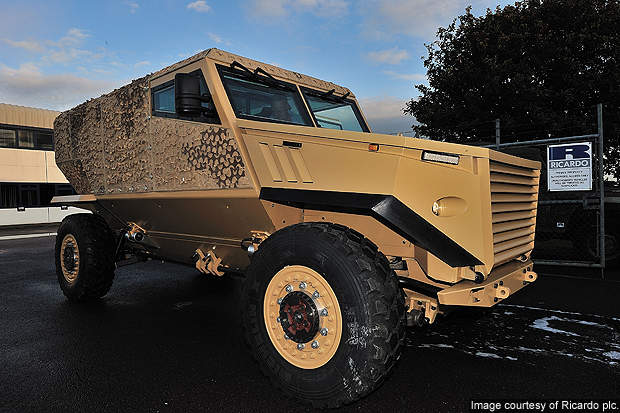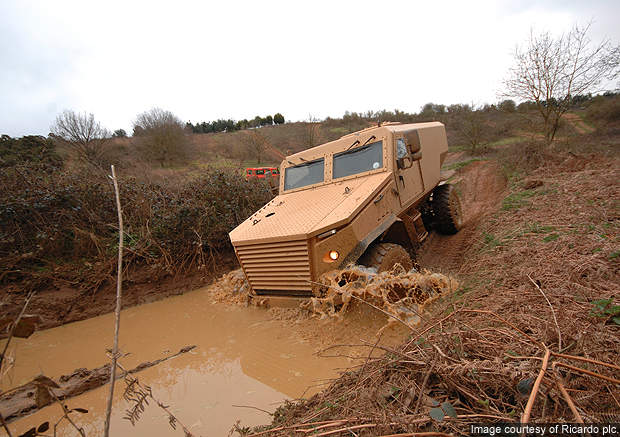The Ocelot / Foxhound light protected patrol vehicle (LPPV).
The Ocelot light protected patrol vehicle (LPPV) was launched at the Defence Systems & Equipment International Exhibition (DSEi) held in London in September 2009.
The LPPV is a 7.5t lightweight mine-protected vehicle. It is expected to provide better protection and flexibility than the present light vehicles on the market.
The British MoD renamed the Ocelot the Foxhound to bring it into line with its other armoured wheeled vehicles such as the Mastiff and the Ridgback.
Foxhound light protected patrol vehicle (LPPV) programme
The Ocelot Foxhound LPPV was specifically designed to meet the UK MoD’s £200m LPPV programme requirements and replace the Snatch Land Rovers in use with the army. The Snatch Land Rovers have been criticised for their inability to provide protection against IEDs and roadside bombs in Iraq and Afghanistan.
The LPPV programme’s objective was to have 400 light protected patrol vehicles production ready by 2010.
The UK MoD purchased two Ocelot Foxhound vehicles for testing in April 2010. The invitation to tender (ITT) was issued in May 2010. In September 2010, the Ocelot Foxhound LPPV was selected under the programme against the contender Supacat and NP Aerospace consortium’s SPV400. An initial £180m order for 200 Ocelot Foxhound vehicles was made through urgent operational requirements (UOR) process in November 2010
In December 2011 a further 100 Ocelot Foxhounds were ordered as part of a £400m package of protected vehicles and Counter-Improvised Explosive Device (C-IED) technology for British Forces in Afghanistan. The contract was finalised in June 2012. The UK MoD also plans to acquire additional 25 vehicles at a cost of £30m.
Ocelot LPPV development
The Ocelot vehicle has been jointly developed by Ricardo and Force Protection Europe (FPE) under the banner Team Ocelot. The collaborators include Formaplex, DSG, Thales, QinetiQ and Sula. It has also been down-selected for the Australian protected mobility vehicle – light (PMV-L) as part of the Land 121 phase 4 project.
Key features such as speed, flexibility, maintenance and protection of this vehicle are similar to that of the Force Protection Mastiff. It can be used for patrol, fire support or as a protected logistics vehicle.
Ocelot features
The Ocelot LPPV includes an automotive armoured spine system or ‘skateboard’, onto which various special-role pods are mounted. These pods are detachable and can be interchanged based on the needs of different missions such as patrol, fire support or protected logistics.
This combination of the skateboard spine system and pods along with advanced composited technology makes the Ocelot LPPV flexible, survivable, highly protective against blasts and mines.
The vehicle is 5.3m long, 2.3m high and 2.1m wide. The four-wheel steering provides it with a turning circle of 12m.
Another unique feature of the Ocelot vehicle is that it has low centre of gravity as all the heavy items are placed under the skateboard. The vehicle can be accessed through large rear doors, two top hatches or from the oversized commander’s door.
Ocelot patrol vehicle
The patrol version of the Ocelot LPPV has seating for two crew and four dismounts. The fire support variant and the protected logistics variant have a seating capacity of two crew and two dismounts, and two crew, respectively.
At a maximum payload of 2,000kg, the vehicle can reach a maximum speed of 110km/h. The gross vehicle weight rating of the Ocelot LPPV is 7,500kg. The low maintenance of this vehicle enables the assemblies to be rapidly changed on the field instead of taking it back to the base workshop for any repairs.
Mission variants
The Ocelot LPPV has been built to be flexible enough to perform numerous missions as and when required. The assemblies of the vehicle can be changed and fitted in 30 minutes to customise it for specific missions.
Engine
The Ocelot LPPV is fitted with a Steyr 3.2l engine. It is a six-cylinder, four-stroke diesel engine with turbocharger. The vehicle is also fitted with six speed auto-transmission and independent, lockable differential axles.
Mine protection
The vehicle has a V-shaped hull, which provides maximum protection to the crew. The hull, running all through the vehicle length, also includes the drive line, main fuel tank, generator, batteries and the powerpack.
The crew area is separated from the running gear, reducing the danger of injury from the running gear while on attack. The crew and the dismounts are separated by the bulkheads placed between them and kept away from the vehicle’s electronic equipment – providing high protection. The vehicle was successful against blast and mobility tests conducted for more than 12 months.
Manoeuvrability
The Ocelot LPPV is an improved medium mobility load carrier (IMMLC) having high mobility and combat performance features. The suspension system provides 338mm of ground clearance under normal loaded conditions. The power to weight ratio is 19.3kW/t (25kW/t in combat mode).
Each Ocelot LPPV can be transported in a C-17, C-130, and CH-47 (underslung) aircraft.
The Global Armoured Vehicles and Counter-IED Vehicles Market 2011-2021
This project forms part of our recent analysis and forecasts of the global armoured vehicles and counter-IED vehicles market available from our business information platform Strategic Defence Intelligence. For more information click here or contact us: EMEA: +44 20 7936 6783; Americas: +1 415 439 4914; Asia Pacific: +61 2 9947 9709 or via email.

